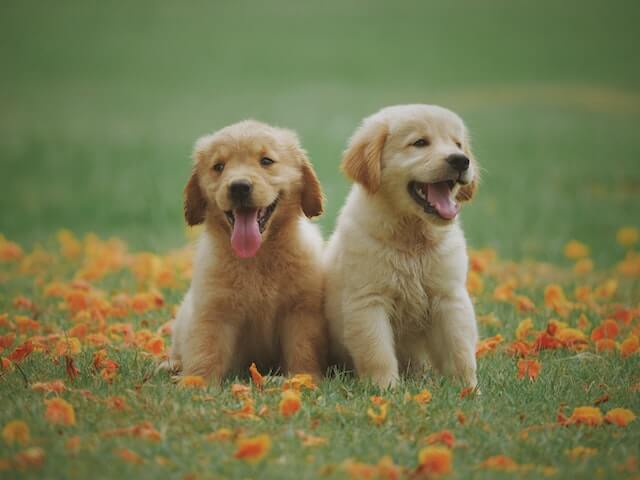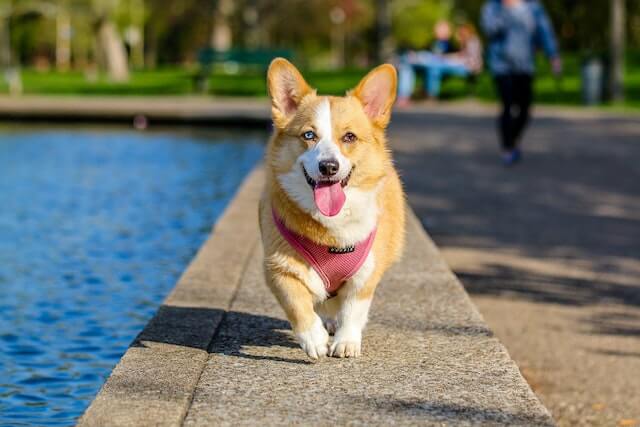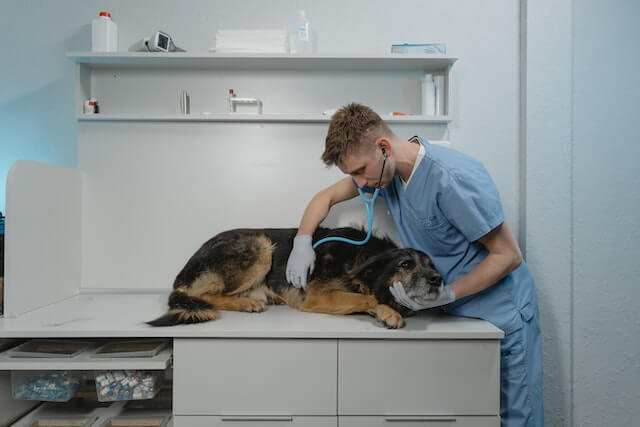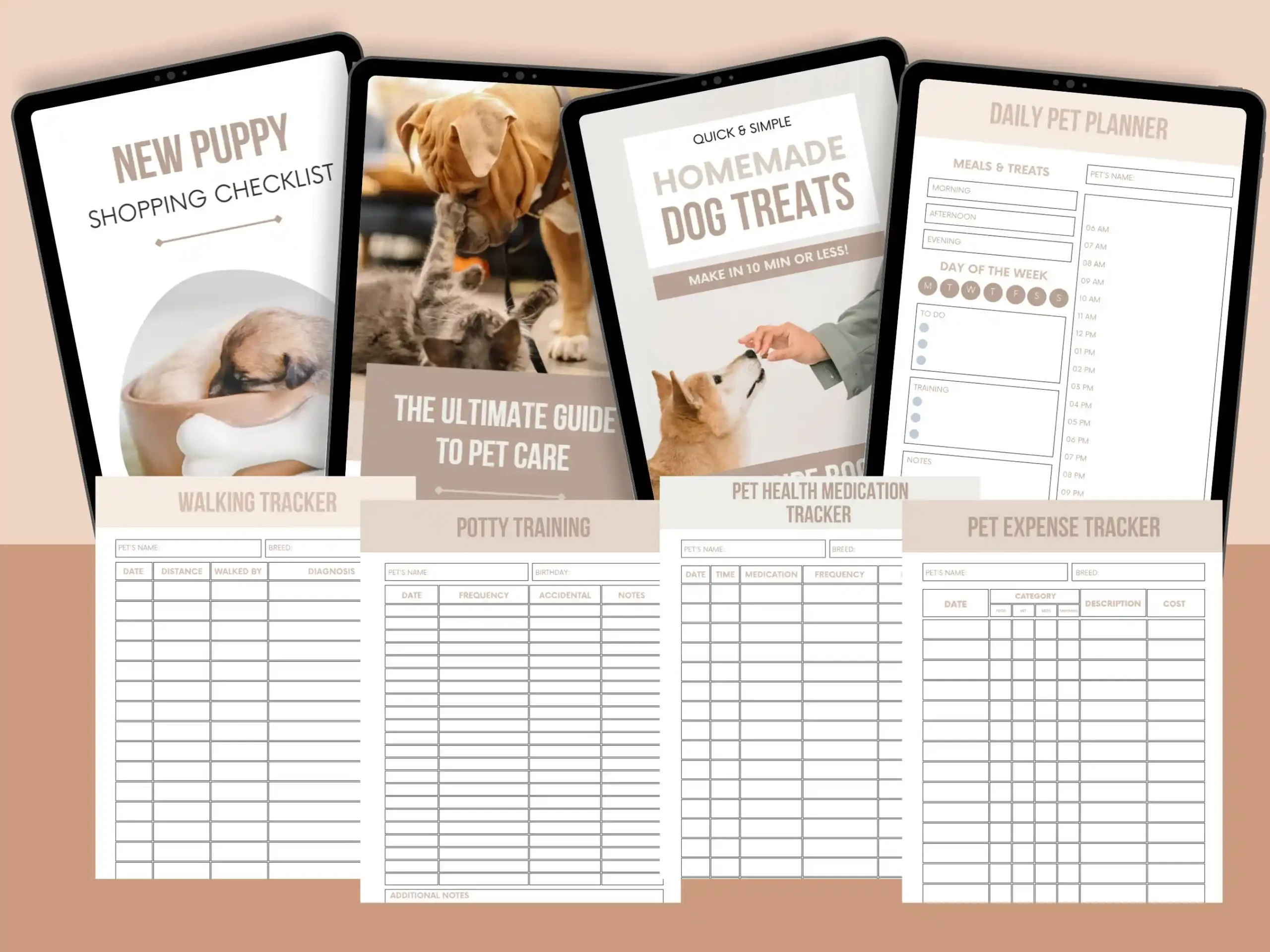
Dogs have the ability to breathe through their mouths, just like humans do. This is because they have a larynx, trachea, and bronchi, which are all similar to the respiratory system found in humans. When a dog pants, it is actually using its mouth to take in air and cool down its body.
While dogs do have the ability to breathe through their mouths, it is not their primary method of respiration. They primarily breathe through their noses, which helps to humidify, filter, and warm the air before it reaches the lungs.
So, while dogs can breathe through their mouths, it’s important that they have a clear nasal passage for optimal respiratory function.
Read on for this article that aims to tell you all about it, with some interesting facts on a dog’s respiratory system, so you understand your dog better and know how he breathes.
When Is Mouth Breathing in Dogs Normal?
Breathing through the mouth is normal for a dog most of the time, with just a few exceptions.
A dog generally breathes through the mouth when he has just had some exercise or when the weather is hot. These are situations when it is normal for a dog to be breathing through the mouth.
Also, sometimes a dog can breathe through his mouth when he is happy, anxious, or going through any such positive or negative emotion, as a lot of dog owners would have noticed till now, and this is also very normal.
When Is Mouth Breathing in Dogs a Concern?
Breathing through the mouth can be a concern but only in certain cases, and finding out these exceptions may at first not be easy. This is more so in the case of a first-time dog owner. Here are a few ways to find out:
- Count the number of breaths your dog takes in a minute. A healthy dog will typically take 20-34 breaths per minute.
- Observe the location and position of your dog when breathing. Is he panting normally during play, or is he struggling to breathe in a specific location or position?
- The lounge, yard, and park are generally safe places where he is playing and thus panting in the process. Watch out for places like corners and positions that clearly indicate that the dog is uncomfortable.
- Also, see if the dog is exhibiting other signs of respiratory distress, such as labored breathing, coughing, nasal discharge, or lethargy.
- Watch for persistence. If your dog is consistently breathing through his mouth, it could be a sign of an underlying issue.
- Pay attention to your dog’s energy level. If he seems to be struggling to catch his breath, it may be time to visit the vet.
These are signs that a dog is having some difficulty breathing. If a dog is mouth breathing at all times or is struggling to breathe, seek veterinary care immediately.
Also, some breeds, such as pugs and bulldogs, are prone to respiratory issues due to their facial structure, so it is important to pay extra attention to their breathing.
NOTE: It’s always best to consult a veterinarian if you are worried about your dog’s breathing.
Must Read: Do police dogs get paid?
Anatomy of a dog’s respiratory system!

The respiratory system of a dog includes the following components:
- Nose:
A dog, like any other creature, breathes through his nose, which is his primary organ of respiration. It is here that the smelling and breathing happen.
The nose of a dog, again like most creatures, contains mucus and fine hair that filters out the debris from the air that goes in, sending clean air in through his body.
- Nasal passages:
A dog’s nasal passage has two chambers in which it is divided and can take separate smells. This is situated somewhere between a dog’s nostrils and throat and is surrounded by sinuses.
It is also the part of a dog’s respiratory system responsible for warming and moistening the air.
- Trachea:
And then, there is the trachea through which the air travels down. This is a cylindrical tube reaching all the way down to the lungs.
The trachea is also known as the windpipe, and like the nose, contains fine hair and mucus to protect the dog from taking in dirt and debris, sending them out through the mouth, and this is when a dog coughs.
- Bronchi:
The trachea travels down and gets divided into two tubes, which are known as the left and right bronchi.
The bronchi get divided into smaller airways called bronchioles and these end in a small sac called the alveoli. Here one finds a thin line between the air and blood, where oxygen is fed to the blood in return for carbon dioxide.
It is when this exchange fails that a dog tends to have difficulty breathing and falls sick.
- Lungs:
The left lung of a dog is called the pulmo sinister and has two lobes. The right one is called the pulmo dexter, and this one has four lobes.
And all these makeup for the anatomy of a dog’s respiratory system.
Is It Healthy for Dogs to Breathe Through Their Mouths?
It is normal and healthy for dogs to breathe through their mouths, especially when panting.
As mentioned earlier, panting is a natural way for dogs to regulate their body temperature, and it is important for their overall health and well-being. Panting allows dogs to exchange hot air for cooler air and helps to prevent overheating.
However, if a dog is mouth breathing at all times or is exhibiting other signs of respiratory distress, there may be an underlying problem that needs to be addressed.
Recommended Reading: Can dogs eat cream of wheat?
How Can You Decide Whether Your Dog’s Panting Requires a Vet Visit?

One needs to make sure that a dog is not struggling hard to breathe, as this could be a sign of breathing difficulty.
A dog owner needs to watch out for signs like flaring nostrils, heaving stomach, fast breathing, head bent low, and noises that occur when breathing.
All this could mean a dog is struggling hard to breathe. Some other causes for this could be allergies, infections, heartworm, or even pneumonia.
It is for these reasons that one needs to take a dog to the vet if he finds these symptoms as a dog breathes through his mouth.
Factors that can affect a dog’s breathing
- Unclean Kennel – This can lead to a contagious form of respiratory disease called kennel cough. It is thus important to keep a dog’s kennel and surroundings clean at all times.
- Infections – Infections are common among dogs, and they thus have to be well-cared for. This can range from those as simple as allergies to those as serious as tumors, all of which need to be taken very seriously, as they affect a dog’s breathing.
- Physical Factors – Sometimes, a dog’s physique could be the reason for his difficulty in breathing. A dog may be born with small nostrils, or he could also have a problem with his muscles, the walls of his chest injured, an enlarged liver, or a bloated belly. All this could contribute to a dog’s difficulty in breathing.
- Foreign object – For instance, a foreign object might have entered his windpipe, or even too much air might have accumulated in his lungs.
- Mental Conditions – Finally, mental conditions too could result in a dog’s difficulty in breathing. This could be anything from minor anxieties to life-changing trauma. This is one of the many reasons why a dog owner needs to ensure that his pet is comfortable and happy.
Tips for maintaining a healthy respiratory system in dogs
One of the first things to keep in mind here is to keep a dog well-hydrated at all times. Just like it is with humans, a lot of problems can be prevented with the right amount of water in the body.
While this is especially important in the summer, there are other steps you need to take in winter, like placing a vaporizer around the dog so he won’t have any difficulty in breathing.
Then, make sure that the dog gets enough supplements to keep a check on his respiration.
Finally, never sleep over any tell-tale signs of heavy breathing. Take the dog to the vet as soon as you detect that he is not breathing normally, and do not assume that it could wait till morning.
Final thoughts
While it is not always a matter of concern if a dog breathes through his mouth, one still needs to keep an eye out and watch for any signs or symptoms when a dog does this.
Because while it is most of the time safe for a dog to breathe through his mouth, it may not be the case.
And at the end of the day, a dog owner always needs to be cautious about his dog’s respiratory health, taking all the right steps where necessary.

